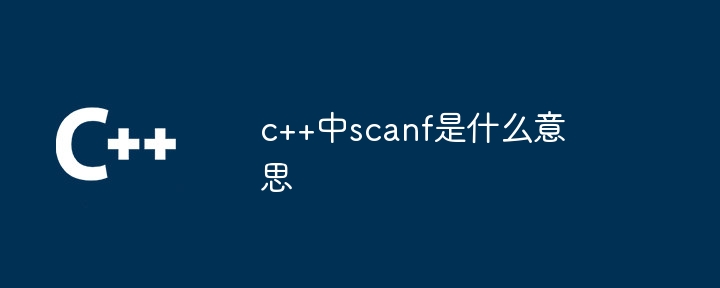Home >Backend Development >C++ >What does scanf mean in c++
What does scanf mean in c++
- 下次还敢Original
- 2024-05-01 17:03:47744browse
The scanf function is used to read formatted data from standard input. Its syntax is: int scanf(const char* format, ...). The function parameters include the format string format and the input variable address, which will store the read data in the specified variable. Returns the number of read data, and returns EOF when the end of file is encountered. Common format specifiers are %c (character), %d (integer), %f (floating point number), and %s (string).

The scanf function in C
The scanf function is used in the C standard library to read the format from the standard input function to transform data. It reads the input data and stores it in the specified variable.
Syntax:
<code class="cpp">int scanf(const char* format, ...);</code>
Parameters:
- format: A pointer to format Pointer to a string that specifies the format of the data.
- ...: Addresses of input variables that will store data from the input.
Return value:
The scanf function returns the number of read data. If EOF (end of file) is encountered, EOF is returned.
Format specifier:
The format specifier specifies the format of the input data. Some common format specifiers include:
- %c: character
- %d: decimal integer
- %f:Floating point number
- %s:String
##Usage example:
<code class="cpp">int num;
char str[100];
scanf("%d %s", &num, str);</code> The above example reads an integer and a string from standard input and stores them in the num and str variables.
Note:
- The scanf function is very strict about the input format.
- If the input data does not match the specified format, the function will produce undefined behavior.
- For user-entered data, it is recommended to use more robust input functions, such as getline or stringstream.
The above is the detailed content of What does scanf mean in c++. For more information, please follow other related articles on the PHP Chinese website!

